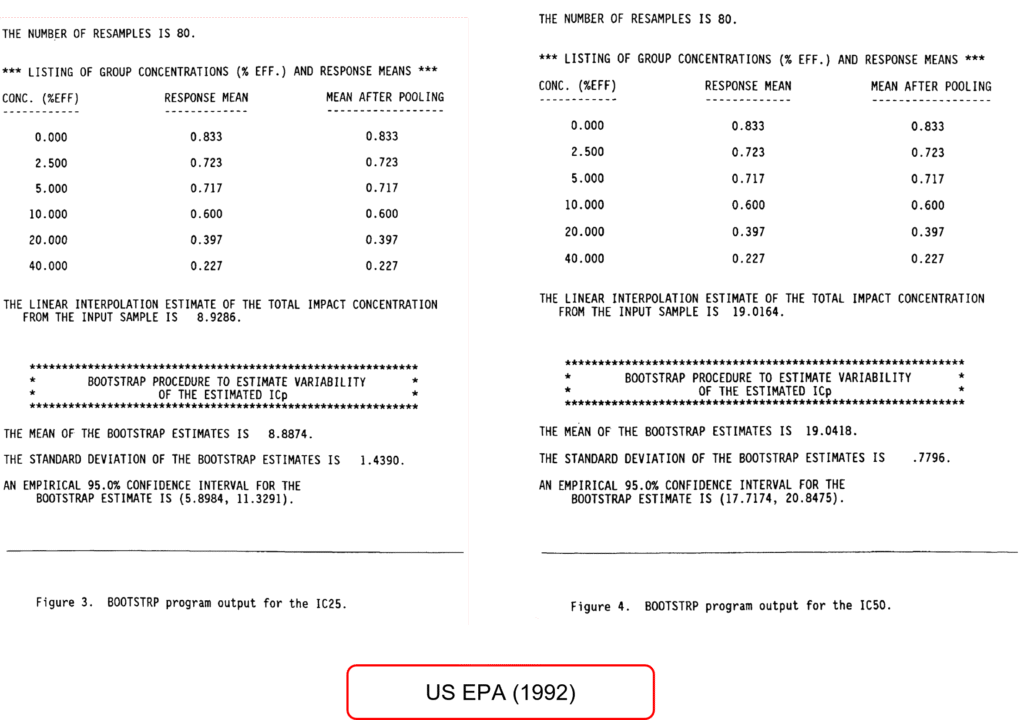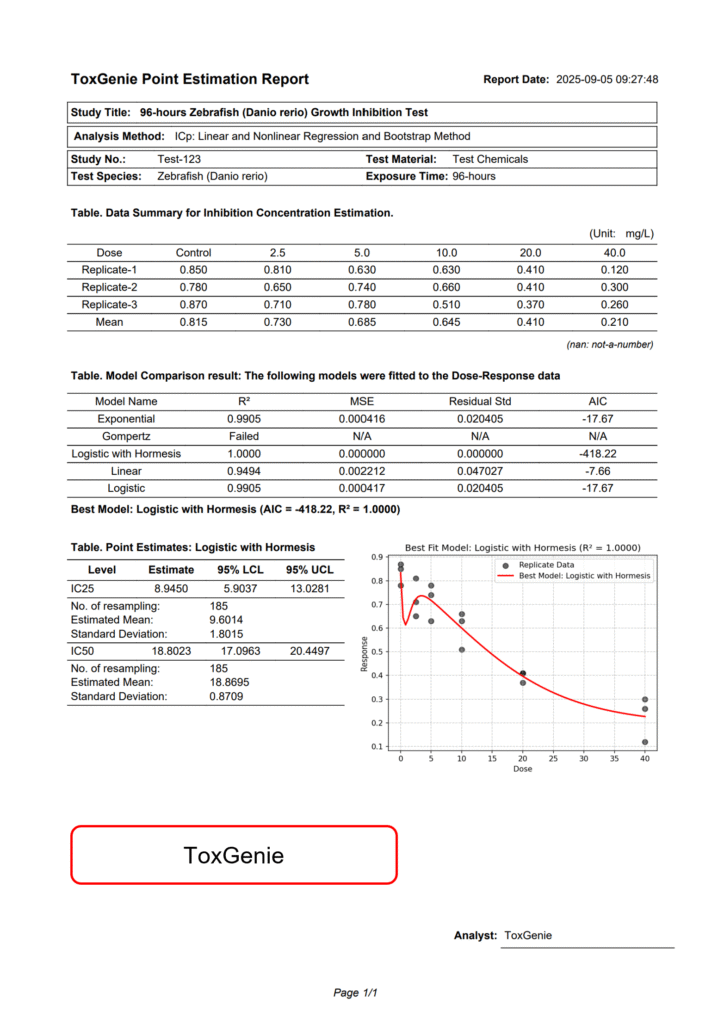Preparation for IC25 and IC50 Estimation
As with all statistical analysis of toxicity data, it is critical to visualize the experimental data distribution through graphing.
A minimum of three replicates is necessary in a toxicity test to enable the calculation of IC25 and IC50.
ToxGenie automatically identifies user-input data and selects the optimal model from among exponential, Gompertz, hormesis, linear, and logistic models for analysis. Therefore, you only need to input your experimental data.
What is the Gompertz Model?
The Gompertz model is a mathematical model commonly used in biology, toxicology, and ecology to describe the biological response (e.g., inhibition rate, growth rate) to varying concentrations (doses) of a substance. This model is nonlinear and is particularly well-suited for data that exhibit a sigmoidal (S-shaped) curve. In simple terms, the Gompertz model effectively captures a pattern where the response increases slowly at first, rises sharply at a certain point, and then gradually approaches a saturation point.
Characteristics of the Gompertz Model
S-Shaped Curve
The Gompertz model produces an S-shaped curve where the response increases gradually at low concentrations, rises rapidly within a specific concentration range, and then plateaus at high concentrations, with little to no further increase in response. This reflects the behavior of toxic substances, where their biological impact grows progressively before reaching a limit.
Nonlinear Response
Unlike linear models, which assume a straight-line relationship, the Gompertz model is suitable for biological responses that do not increase linearly with concentration but instead follow a more complex pattern. For instance, it effectively describes scenarios where a toxic substance has minimal impact at low concentrations but exhibits a sharp increase in toxicity beyond a certain threshold.
Mathematical Representation
The Gompertz model is typically expressed in the following form (Environment Canada, 2005):

Comparison with the Weibull Model
The Gompertz model is similar to the Weibull model but differs in the shape of the curve. The Weibull model allows greater flexibility in the curve’s shape above and below the inflection point, whereas the Gompertz model tends to reach saturation more rapidly at higher concentrations.
Analysis Results of ToxGenie’s IC25 and IC50 Estimation
To compare ToxGenie’s analysis results, IC25 and IC50 estimation methods were applied using the same data as in the US EPA Report (EPA/600/4-91/021, February 1992). The results are shown above. However, due to difficulties in obtaining data optimized for each model, representative analysis results are provided, and users are encouraged to analyze various datasets.
The US EPA used the Linear Interpolation method to calculate IC25 and IC50, with 80 resamples. However, Environment Canada (2005) recommends a minimum of 240 resamples. ToxGenie employs 240 resamples, excluding outlier data, to calculate 95% confidence limits. Consequently, there are slight differences from the US EPA results, but all fall within the 95% confidence interval. The reasons for these differences are explained below.


The US EPA’s Linear Interpolation method estimates IC25 and IC50 values through simple linear interpolation, relying on linear connections between data points. This approach is fast and intuitive but may fail to capture nonlinear biological responses (e.g., sigmoidal curves). In contrast, exponential, Gompertz, hormesis, linear, and logistic models use nonlinear regression analysis to model more complex dose-response relationships.
Resampling 80 times estimates 95% confidence limits through bootstrapping but may not fully capture the variability of the distribution due to the small sample size, potentially resulting in less stable confidence limits. Resampling 200 or more times reflects the distribution’s characteristics more accurately, narrowing the confidence interval and increasing stability.
Start Your Toxicity Data Statistical Analysis with ToxGenie
Understanding quantal and quantitative data is the first step toward robust toxicology research. ToxGenie offers an intuitive platform for both data types, suitable for beginners and experts alike. Curious? Start with a 30-day free trial and revolutionize your toxicity data statistical analysis today!
